DEEP underfoot, and known to only a few, lies one of Sydney’s great modern engineering feats, carved out of 200 million-year-old rock.
The Daily Telegraph was invited to step inside the mysterious marvel, unopened for four years and unseen by but a handful of people since its completion in 2000.
The Northside Storage Tunnel was built to improve the water quality in Sydney’s harbour by catching raw sewerage and storm water that otherwise pollutes the city’s iconic waterways during heavy rain.
Passing through the portal to the tunnel felt like stepping through an oversized bank vault. A four-metre-wide, five-tonne hydraulic circular door stood ajar, beckoning towards a seemingly endless, dark cavity.
“It’s like stumbling upon an ancient cave,” our tour guide, Principal Geologist Daryl Gilchrist said as he drove us into the dank catacombs, 100 metres below the surface.
Immediately the rancid odour of waste invaded our nostrils. Despite the tunnel being mostly pumped dry for our expedition, an inches deep underground stream still drifted through the circular passageways.
A combination of sewerage, silt and debris coasted over the sandstone rock as evidence of the millions of people bustling around the city above.
Seven major caverns and ten shafts comprise the $460 million dollar project and for the most part the self-supporting tunnel measures 6.6 metres in diameter. However, deep below Tunks Park lies a grand chamber, a junction dug out so the bore machines that made it could shift and turn.
The sludgy ooze squelched beneath our boots as we got out of our sewer buggies to marvel at the 12 metre high chamber. Lengthways it flared out 15 metres, creating an impressive man-made rocky cavern.
“We’re looking at a big cavity in the ground, it’s a cathedral down here it’s fantastic,” Mr Gilchrist said.
“The rock here is from the Hawkesbury sandstone, now that formation is from 250 to 200 million years of age. It’s a quartz-rich sandstone, unlike limestone that can deteriorate with acidic ground water. It’s actually fairly inert, and it’s a very good medium for construction and excavation.”
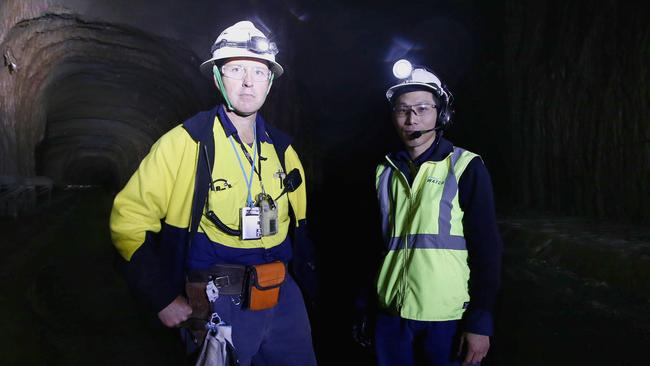
Heart rates dropped after that, knowing it was unlikely a shard of sandstone would dislodge from the cavern ceiling at a moment’s notice.
Sydney Water Project Manager Charles Leung, who accompanied us on our underground voyage, said the vastness of the tunnel still left him in awe.
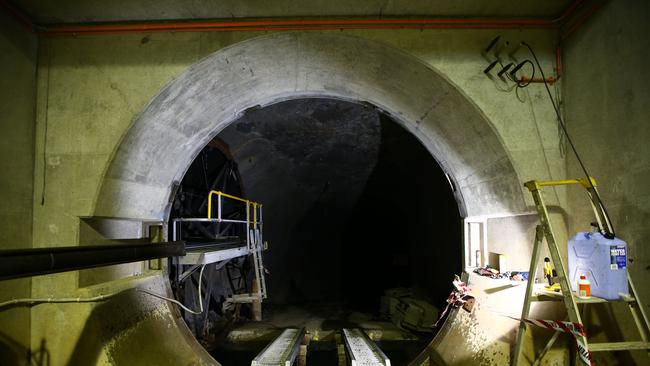
“You wouldn’t think to find something like this underground, it’s very impressive. An engineering feat for sure,” Mr Leung said.
Since it was built, the immense underground plumbing solution has had an extraordinary impact on the city above.
In 15 years it has caught over 82 billion litres of wastewater from the city’s sewerage and storm water drains, diverting the unfiltered waste from the idyllic coastal waters into the North Head Wastewater treatment plant.
The 22 kilometre tunnel continues to collect overflow from four main points along the Northern Suburbs Ocean Outfall Sewer system, and doubles as a raw sewerage storage facility when the treatment plant fails.
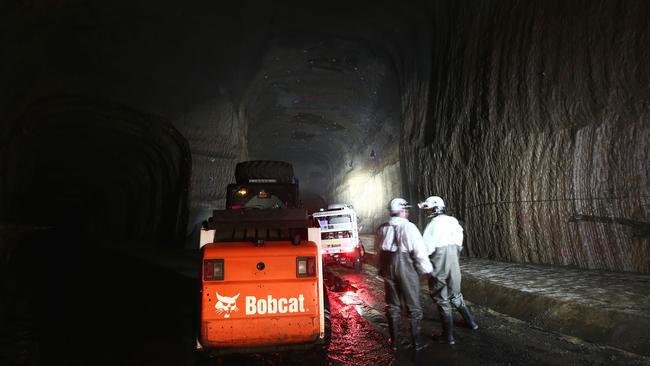
Mr Leung said the tunnel had done a great deal improving the water quality of the tributaries that flow into the harbour, proven most recently during the storms that drenched the east coast in April.
“In that rain event the tunnel captured the equivalent of 1200 olympic sized swimming pools of wastewater,” Mr Leung said.
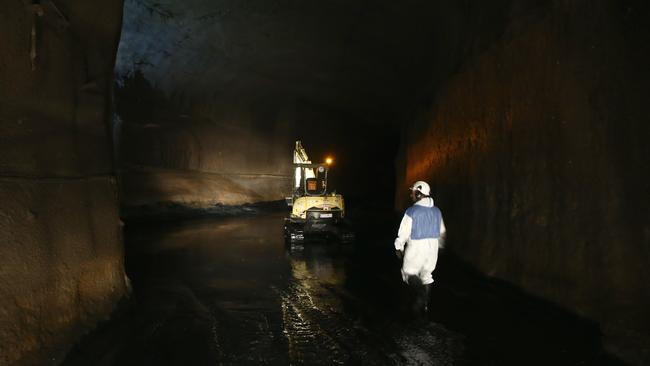
“It’s done a great deal to improving the water quality in the harbour. It just works quietly away with most people not even knowing its here.”
“ It’s probably one of our most important sewer assets.”
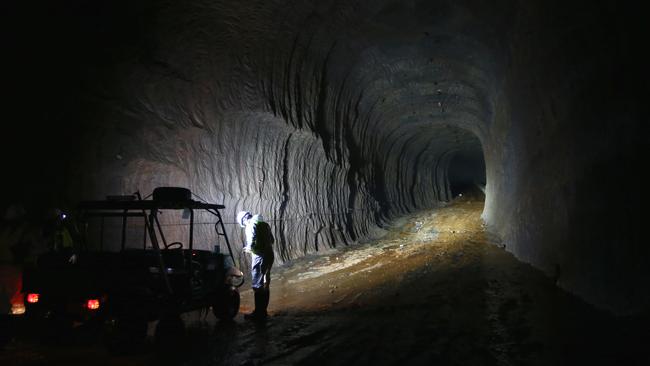
After four hours underground, passing through the slick-covered tunnel network and marvelling at the awesome artificial caverns it was time to resurface.
Poisonous hydrogen sulfide had begun to waft upwards as our buggies disturbed the toxic stream, kicking up silt and awakening the fumes. The gas detector sounded an alarm, hastening our exit. The impressive cathedral-like cavern was above all still a subterranean sewer.


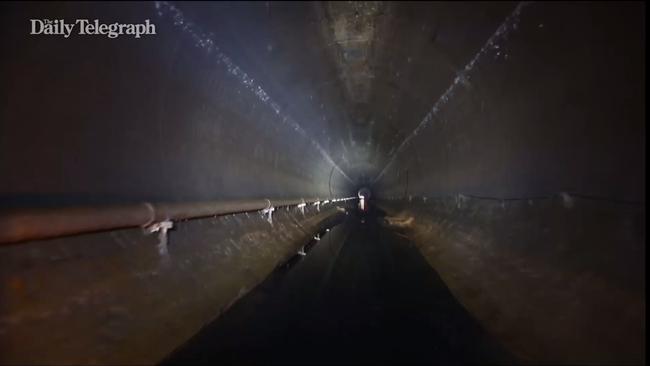
Who Owns Tassie’s farms: Biggest investors, landholders named
An annual investigation can reveal Tasmania has been a key destination for capital in the race to invest in Aussie agriculture. See the full list.
Families, billionaires and foreign owners of SA’s largest farms revealed
From sprawling stations in the north to prime cropping in the south – meet those who own South Australia’s largest farming properties. See the full list.